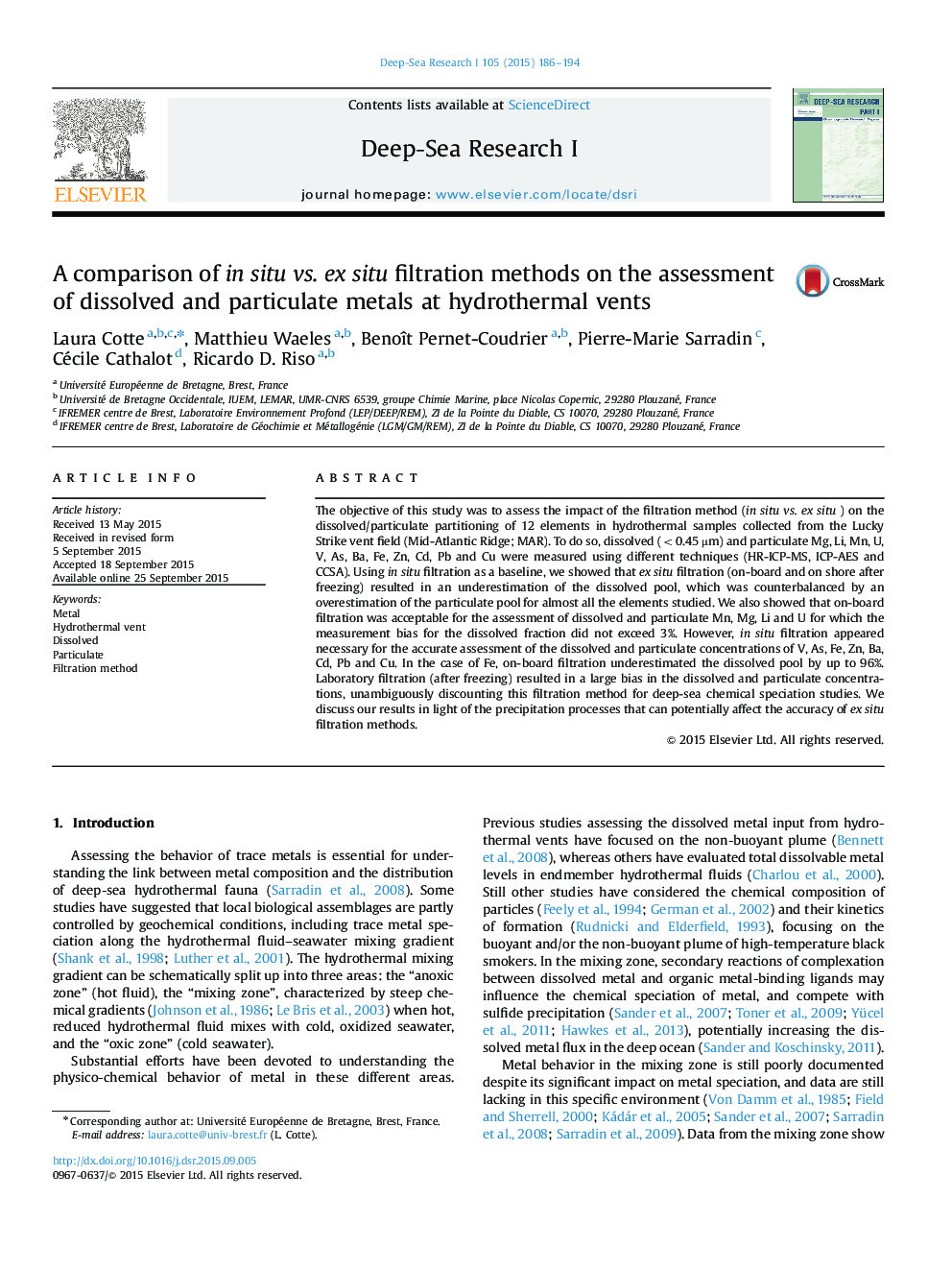| کد مقاله | کد نشریه | سال انتشار | مقاله انگلیسی | نسخه تمام متن |
|---|---|---|---|---|
| 4534479 | 1626325 | 2015 | 9 صفحه PDF | دانلود رایگان |
• We compared three different filtration methods on hydrothermal samples.
• Dissolved metals are underestimated after post-sampling filtrations.
• On board filtration is suitable for dissolved and particulate Mn, Li, Mg and U.
• In situ filtration is essential for V, As, Ba, Fe, Zn, Cd, Pb and Cu.
• Precipitation of sulfides and/or Fe-oxyhydroxide can explain this underestimation.
The objective of this study was to assess the impact of the filtration method (in situ vs. ex situ ) on the dissolved/particulate partitioning of 12 elements in hydrothermal samples collected from the Lucky Strike vent field (Mid-Atlantic Ridge; MAR). To do so, dissolved (<0.45 µm) and particulate Mg, Li, Mn, U, V, As, Ba, Fe, Zn, Cd, Pb and Cu were measured using different techniques (HR-ICP-MS, ICP-AES and CCSA). Using in situ filtration as a baseline, we showed that ex situ filtration (on-board and on shore after freezing) resulted in an underestimation of the dissolved pool, which was counterbalanced by an overestimation of the particulate pool for almost all the elements studied. We also showed that on-board filtration was acceptable for the assessment of dissolved and particulate Mn, Mg, Li and U for which the measurement bias for the dissolved fraction did not exceed 3%. However, in situ filtration appeared necessary for the accurate assessment of the dissolved and particulate concentrations of V, As, Fe, Zn, Ba, Cd, Pb and Cu. In the case of Fe, on-board filtration underestimated the dissolved pool by up to 96%. Laboratory filtration (after freezing) resulted in a large bias in the dissolved and particulate concentrations, unambiguously discounting this filtration method for deep-sea chemical speciation studies. We discuss our results in light of the precipitation processes that can potentially affect the accuracy of ex situ filtration methods.
Figure optionsDownload as PowerPoint slide
Journal: Deep Sea Research Part I: Oceanographic Research Papers - Volume 105, November 2015, Pages 186–194
